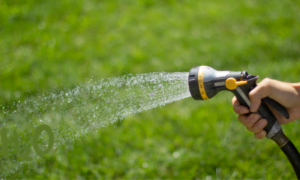
I’ll be sharing information on air plants (Tillandsia) with you today in this blog. I have been taking care of this plant for seven years now, so I have proper experience with this plant as none of my plants have died. I have experience taking good care of plants, so based on my knowledge of planting and maintaining Air Plants (Tillandsia), I will attempt to address each step by step, including the benefits you can get from this plant. After reading this blog, you will get a complete idea about this tree.
If you are thinking of keeping a tree with less maintenance and various benefits, and also want to keep the tree without any soil, then you should choose an air plant tree because these plants do not require much maintenance and care, and they can be planted without soil. I will try to show how to plant a tree without soil very easily in this blog, so you should read the entire blog carefully.
First, I will try to highlight this tree, how to grow it very fast, how to take care of it, how to plant it without soil, and some important things that, in order to care for this tree, should be given top priority.
About Air Plants (Tillandsia)
Air Plants (Tillandsia), scientifically known as Tillandsia, do not require soil and can survive by attaching themselves to other surfaces such as rocks or even telephone wires in their natural habitat.
I’m attempting to draw attention to the names and heights of a few noteworthy species;
Tillandsia ionantha:
It is a very popular plant known by quite a few people. This plant grows two to four inches tall.
Tillandsia xerographic
It is also notable among air plant species, as this species can grow up to 12 inches tall and 18 inches wide, with silvery-grey foliage.
Tillandsia strict
I prefer this species of Tillandsia air plant since it grows to a maximum height of 6 to 8 inches, however its size can fluctuate. It looks great indoors, and its leaves form a symmetrical rosette, adding to its aesthetic appeal.
Tillandsia capitata
Well, it can usually grow from 6 to 10 inches tall and looks great and beautiful with both elongated and pinnate leaves.
Tillandsia bulbosa:
This plant is more beautiful to look at because the leaves are curled and the plant is usually four to six inches tall.
A successful complete guide to caring for Air Plants (Tillandsia)
Caring for a plant means ensuring that the plant is getting the right amount of water, light, air, temperature, fertilizer, etc.
- Water
- Light
- Temperature
- Fertilizer
- Air Circulation
- Grooming
- Repotting
- Blooming
- Rest Period
- Pest Control
Water

As this plant does not use any type of soil, water usage is very important for it because overwatering can be very harmful. From my personal experience, I recommend watering twice to thrice a week. Mist the plant with water using a spray bottle and soak your air plant in room temperature water for 20 to 30 minutes only once a week. Discard any excess water after soaking and be careful not to let water accumulate at the base of the plant, as this could lead to root rot.
Light

Sunlight plays a very important role for these plants because no plant can survive long without sunlight, but some plants cannot receive direct sunlight; they have to be provided with indirect sunlight. Also, one should avoid placing them in direct sunlight, as this can lead to the leaves burning and a 90% chance of the plant dying. Therefore, when positioning this plant, choose a location where it does not receive direct sunlight, but rather indirect sunlight. It will be a very good decision to choose a place that will get.
Temperature

Since humans are harmed by high temperatures, temperature is crucial for plants, and low temperatures are harmful to humans. Similarly, temperature plays a very important role for a plant. This plant can grow very well in temperatures around 32°C, and temperature fluctuations are very sensitive to this plant.
Fertilizing

Fertilizing plants is beneficial, but over-fertilizing is very dangerous for them. Therefore, the best time to fertilize this plant is from spring to autumn. You can use a water-soluble orchid or bromeliad fertilizer once a month; this will provide the plant with more nutrients.
Air Circulation
Since this plant does not require any soil, it collects everything from air and water to nutrients, so air circulation is very important to this plant. Therefore, this aspect must be taken care of when keeping the plant.
Grooming
The dead leaves of the plant must be pruned using sharp scissors to improve air circulation and keep the plant fresher.
Repotting

Air plants do not require soil, but they can be mounted on colorful objects like driftwood, jewels, or shells using non-toxic cement or twine. If your air plant outgrows its mounting or becomes overcrowded, gently remove it and mount it on a larger surface.
Blooming
Air plants typically bloom once during their lifetime. Flower spikes emerge from the center of the plant and can last several weeks to several months. Once the mother plant has finished flowering, it will produce offsets, also known as “pups,” which can be clipped off when they reach half or one-third of the parent plant’s size.
Rest Period
After blooming, certain air plants experience a dormant phase. They could seem lifeless or withered at this period. When new growth starts to sprout, watering should be reduced during the rest period and then resumed regularly.
Pest Control
Keep an eye out for pests like mealybugs, spider mites, or aphids on your air plants regularly. If you notice any pests, remove them by gently washing the affected areas with soapy water or by spraying the plant with neem oil.
Benefits of Air Plants (Tillandsia)
Air plants, also known as Tillandsia, have gained popularity in the world of indoor gardening due to their unique characteristics and numerous benefits. We will discuss the many benefits of adding air plants to your living area in this blog post, with an emphasis on their aesthetic value, health advantages, and environmental impact.
Health of Air Plants

Air Purr Properties
Air plants are natural air purifiers, filtering out toxins and impurities from the air through their leaves. This can contribute to a healthier indoor environment, especially for individuals with respiratory issues or sensitivities..
Stress-Reducing Effects
Studies have shown that being around plants, including air plants, can help reduce stress levels and promote a sense of calm and well-being. Simply having these plants in your home can have a positive impact on your mental health.
Improvement in Indoor Air Quality
Your home’s overall air quality can be improved by air plants because they can release oxygen at night and collect carbon dioxide during the day. This can lead to better sleep, increased focus, and enhanced productivity.
Decorative and Aesthetic Benefits
Versatility in Home Decor

One of the key benefits of air plants is their versatility in home decor. They can be displayed in various ways, from hanging terrariums to being mounted on driftwood, adding a touch of nature and beauty to any space.
Low Maintenance Requirements

Air plants are low maintenance and require minimal care compared to traditional houseplants. They are perfect for people who are busy or are new to gardening because they do not require soil to grow; instead, they absorb nutrients and moisture through their leaves.
Unique and Eye-Catching Features
With their intriguing shapes, textures, and colors, air plants are sure to catch the eye of anyone who enters your home. They make excellent conversation starters and can serve as focal points in your interior design.
Environmental Benefits of Air Plants
Sustainable Plant Options
Air plants are regarded as sustainable plant solutions because of their low resource requirements and capacity to grow without soil. By incorporating air plants into your space, you are choosing a more eco-friendly alternative to traditional houseplants.
Air Plant Care Tips for a Greener Lifestyle
Maintaining air plants can be a fulfilling endeavor and an opportunity to engage in sustainable living. By following simple care tips such as misting regularly, providing adequate light, and avoiding direct sunlight, you can help your air plants thrive and contribute to a greener lifestyle.
Contribution to Ecosystem Balance
In their natural habitats, air plants play a vital role in ecosystem balance by providing habitats for wildlife, regulating moisture levels, and supporting biodiversity. By cultivating air plants at home, you are indirectly contributing to the preservation of our planet’s ecosystems.
Incorporating air plants into your living space not only enhances the aesthetic appeal but also promotes better health, reduces stress, and supports environmental sustainability. To create a greener, fresher, and livelier living space, think about incorporating these unusual plants into your interior design scheme.
All of the information regarding air plants from my own experience and how to use them has been covered in the discussion above. Additionally, all the information about caring for these plants has been presented. Hopefully, by following these care instructions, your plants will always remain fresh, and you will benefit from them greatly. From my personal experience, I can say that with just a little care and effort, if you decide to cultivate and sell these plants, you stand to profit as minimal expenses are required, thus reducing the risk of losses.

